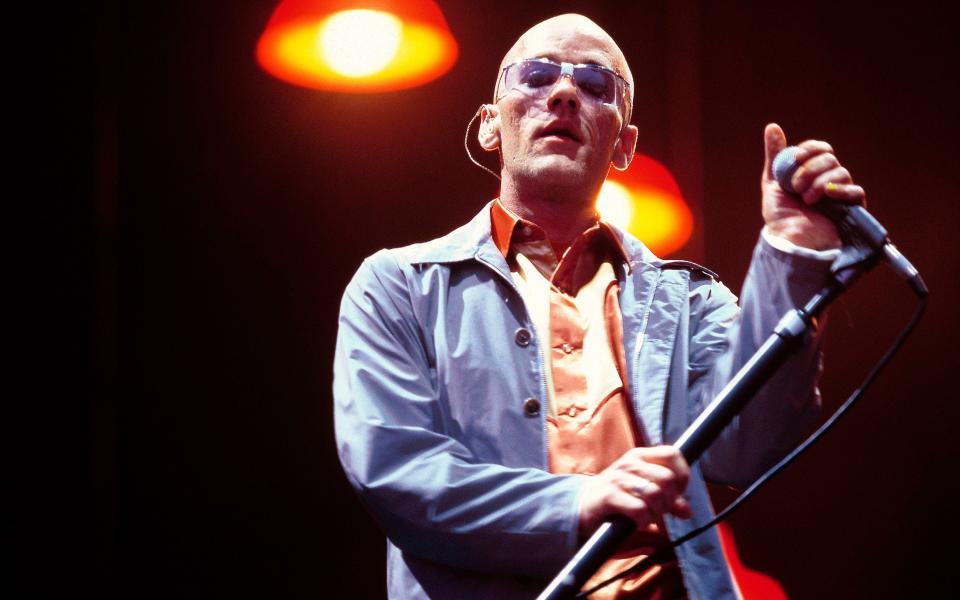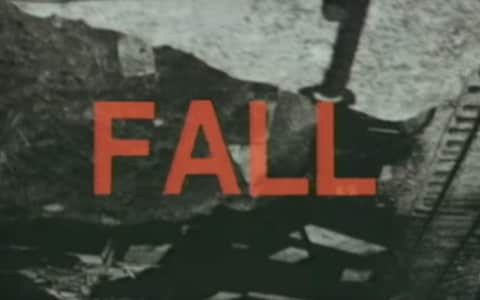10 of the best R.E.M songs

R.E.M are one of the most influential alternative rock bands to have come out of the United States in the Eighties. Although the band was heavily influenced by punk and the DIY aesthetic, they developed their own unique style of alternative rock, which catapulted the genre to the mainstream, and is credited as the inspiration behind bands such as Nirvana and Pavement.
The band was started in Athens, Georgia, by Michael Stipe and Peter Buck. They soon advertised for more members of the band, and Mike Mills and Bill Berry joined, meaning the band was born in 1980. In 1981, they released their first single, Radio Free Europe on a small independent label. By 1983, they’d released their first critically acclaimed album, Murmur, and the band became very popular on the underground circuit. It wasn’t until 1987 that they hit the big time, and achieved mainstream success, with the single The One I Love, before signing with Warner Bros Records in 1988.
In the early 1990s, the band released two more commercially successful albums, Out Of Time (1991) and Automatic For The People (1992), which catapulted them to international fame. After two more successful albums, Bill Berry decided to leave the band in 1997, leaving them as a trio, and signalling the beginning of the end. In 2011, the band finally split up, but in that time they’d sold more than 85 million records worldwide, and had been inducted into the Rock And Roll Hall Of Fame.
Everybody Hurts (Automatic For The People, 1992)
Everybody Hurts’ lyrics can be interpreted as reaching out to someone and offering them help, even if they’re going through so much emotional pain that they can’t see a way through. With an enormous amount of airplay, it peaked at 29 in the US charts, and entered the top ten in Canada, Australia and the United Kingdom. In 2010 the song was re-released as a charity single to support victims of the Haitian earthquake.
Fall On Me (Life's Big Pageant, 1986)

Fall on Me was the first of two singles released from the L.P 1986 Life’s Big Pageant. The song was one of the band’s earliest arrangements to tackle environmentalism, by discussing acid rain. The band’s lead singer, Michael Stipe, also said that the “the song was pretty much about oppression.” It entered the Billboard Hot 100 at number 94, and also marked a transition to a more accessible sound for the band.
It's The End Of The World As We Know It (And I Feel Fine) (Document, 1987)
It’s The End Of The World As We Know It (And I Feel Fine) was released in 1987, on R.E.M’s fifth studio album, Document. It was then released as a single in 1988, reaching number 69 in the US Billboard 100 Chart and number 39 in the UK. in an interview with Guitar World magazine in 1996, the band’s guitarist Peter Buck confirmed the song was in the tradition of Bob Dylan’s Subterranean Homesick Blues.
Man On The Moon (Automatic For The People, 1992)

Man On The Moon was released as the second single from R.E.M’s legendary 1992 album Automatic For The People. The song is Michael Stipe’s homage to the late-night entertainer Andy Kaufman, and invokes the conspiracy theories surrounding the moon landing. In it, Stipe even mimics Kaufman’s Elvis Presley impersonation, which caused the band to “fall on the floor laughing.” Upon release, it reached number 30 in the US Billboard 100, and has been hailed by critics as “one of R.E.M’s greatest achievements.”
Nightswimming (Automatic For The People, 1993)

Nightswimming was released in 1993 as the fifth single from R.E.M’s eighth album, Automatic For The People. The song is written as a slow-tempo ballad, and its lyrics reference a group of friends going skinny dipping at night, drawing upon real-life experiences. The song was performed by Mike Mills and Michael Stipe - with Mills on the piano and Stipe on vocals, and has been widely covered. The string arrangement was written by former Led Zeppelin bassist John Paul Jones, and a prominent oboe by Deborah Workman in the latter part of the piece.
Losing My Religion (Out Of Time, 1991)
Losing My Religion was released as the first single from R.E.M’s 1991 album Out Of Time. Despite being built on a mandolin riff, the song became the band’s highest charting hit in the United States, reaching number 4 and therefore bringing their music to a much wider range of listeners. Interestingly, the term ‘losing my religion’ was used in the southern states of the US as a phrase to mean losing one’s cool or civility. On release the song was nominated for several Grammy Awards, winning Best Pop Performance as well as Best Short Form Music Video.
Drive (Automatic for the people, 1992)

Drive was the lead single from R.E.M’s eighth studio album, Automatic For The People, which was released in 1992. Although not as commercially successful as previous singles Losing My Religion or The One I Love in the United States, it peaked at number 11 in the UK charts, and was their second most successful release. Bill Berry, the band’s drummer, commented on the song’s meaning: “Drive is basically just telling kids to take charge of their own lives.” Peter Buck, on the other hand, had a political analysis: “It’s a subtle political thing. You like to think that you can appreciate these songs on any level.”
The One I Love (Document, 1987)
The One I Love was released on R.E.M’s fifth full-length studio album, Document, in 1987. It was the band’s first big hit single, reaching number 9 in the US Billboard 100, and number 14 in the UK. Despite being interpreted as a normal love song, the meaning of the lyrics is actually much darker, and refers to an abusive relationship. In a 1988 interview, Stipe commented: “It’s very clear that it’s about using people over and over again.”
Life And How To Live It (Fables Of Reconstruction, 1985)

Life And How To Live It is one of R.E.M’s lesser known tracks, which was released on the band’s third studio album Fables of Reconstruction, in 1985. The album was the only one that the band recorded outside of the US. The album was instead recorded in London, with the producer Joe Boyd, best known for his work with folk bands such as Fairport Convention. Life and How To Live It was about the author Brivs Mekis, who was from their hometown, and had published a book of the same name.
Radio Free Europe (Murmur, 1983)
An oldie but an unmistakeable goodie. Radio Free Europe was R.E.M’s first ever single, which was released in 1981, just a year after they formed as a band. The song’s lyrics are somewhat impenetrable, which went on to become one of their signature styles of writing. In 1983, the song was re-recorded and re-released on the band’s first album, Murmur, and it entered the Billboard 100 Chart at number 78. It has also been recognised for setting “the pattern for later indie rock releases by breaking through on college radio in the face of mainstream radio’s general indifference.”

